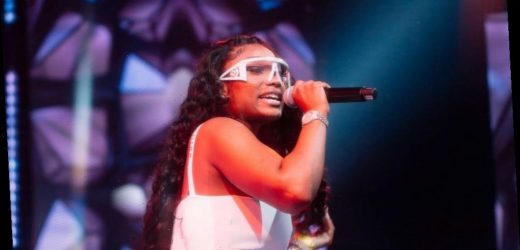Cardi B made history in early March, becoming the first female rapper to have five No. 1 hits on the Billboard Hot 100 chart, two years after she won best rap album at the 2019 Grammys.
But she’s not the only femcee making her mark in the industry.
At this year’s ceremony, Megan Thee Stallion picked up three awards, including best new artist. Two other rappers, Doja Cat and Chika, each received Grammy nominations in different categories — the last time that happened was in 2001 with Lil Kim, Eve, and Missy Elliott.
According to MRC data, 2020 was considered to be a historical year for female rappers.
Dozens of female rappers are emerging from all entry points in hip-hop. From the laidback West Coast sounds of Saweetie to Flo Milli’s playfully mischievous Alabama attitude and the freestyle magic of Philadelphia-native Tierra Whack, these women have proved they can rap as well as, if not better than, their male counterparts.
“It’s like a door was open, and they’ve all been coming and coming hard,” said Katrina Taylor, better known as Trina.
This surge of female rappers is a breath of fresh air, the industry’s matriarch said.
“The platform has never been this wide. One at a time, we snuck in,” Trina said of the time she dominated the hip-hop charts alongside fellow femcee icons Da Brat, Missy Elliott and Eve in the ’90s and early 2000s.
Trina, who emerged in the late ’90s from Miami, is known for her combative and raunchy lyrics. The Southern girl became a pioneer for sexually explicit language, following in the footsteps of Lil’ Kim and Foxy Brown.
“I’m from Miami. We have strip clubs and Uncle Luke’s music. That’s all I knew,” Trina explained.
“Women just started chanting it when I hit the stage. The next thing you know, that was it, that’s what I named my album” Trina added.
“Everybody is a bad b—-” now,” she said, speaking of how times have changed.
In her recent book, “The Motherlode: 100+ Women that Made Hip-Hop,” Clover Hope deemed Trina an “anthem maker” who provided a blueprint for her Miami apprentices, the City Girls, Houston native Megan Thee Stallion and New York newcomer Armani Caesar.
“Trina had that shock value. She was very jarring,” Caesar said. “When I made my mixtapes, I was saying the same things to catch people off guard.”
The Buffalo, New York-bred rapper is considered the “first lady” of Griselda Records after signing with the label in March 2020.
Hope said women introduced the bold type of sexual expression that is different from men, yet because of that, outspoken female performers often receive harsh criticism.
Cardi B and Megan Thee Stallion’s single “WAP” debuted at No. 1 on the Billboard Hot 100 with 93 million streams in the U.S. in one week, according to Billboard. Since the single’s release, the stars have seen a firestorm of backlash on social media for the risqué lyrics and meaning behind the song’s title.
“People are always going to have something to say,” Trina said. “Let them talk.”
While all femcees don’t include sexually explicit content in their music, they still face daily hurdles, such as the misogyny and power trips that come from thriving in a male-dominated industry.
“[For women], their dreams and goals are to be in the industry, and [men] use that against them, and it’s sick,” Caesar said. “They’re at the mercy of these male managers or music executives.”
Trina and Caesar believe as the shift for women rappers comes center stage, a change must happen behind the scenes for music label executives, producers, and managers.
“We get the short end of the stick because we cost the most,” Trina explained. “From glam to hair, to wardrobe, it makes it harder because the labels don’t want to pay for that.”
Despite ongoing personal challenges, women rappers realize there’s strength in numbers.
“We had so many years of not having music collabs. Now, people are clamoring for them,” Hope said.
They’ve also taken it upon themselves to build camaraderie and change the narrative without allowing onlookers to instigate.
“We’re stronger together than we are apart. It’s a man’s agenda to keep us separated because they know if we were to click up, we would take over the game,” Caesar explained.
Hope and Trina explained that the surge of femcees is primarily due to access and resources such as social media — from TikTok to Instagram.
“We’re in a phase where being viral is important,” Trina said.
“The more people get acclimated to these different technologies, they figure out the best ways to discover new artists,” Hope said.
Though some are skeptical of the lasting influence this crop of femcees will bring, the fandom that currently surrounds the female performers suggests the hip-hop industry has been waiting for just them, for a very long time.
Source: Read Full Article

